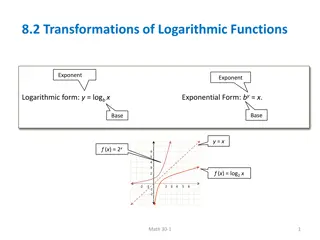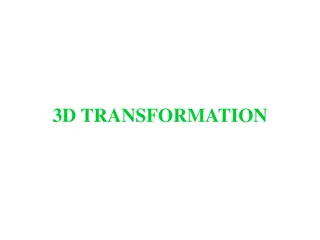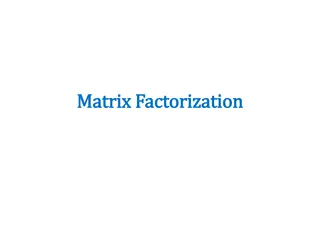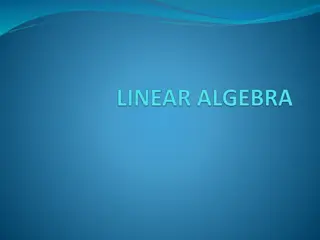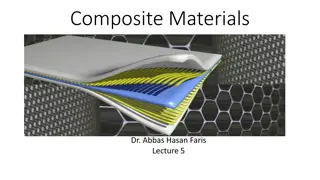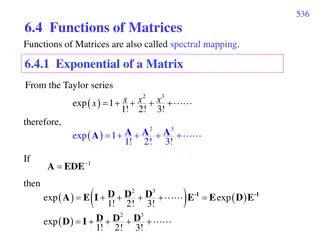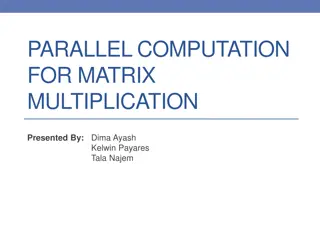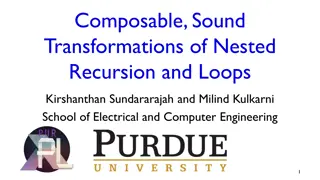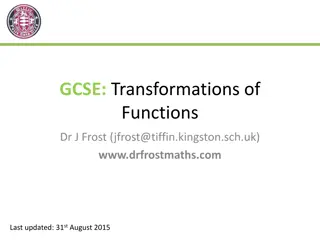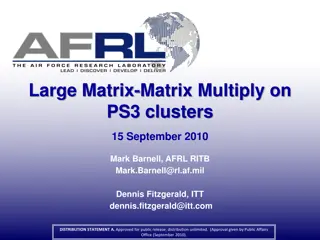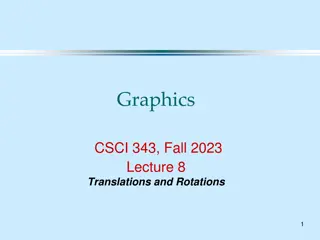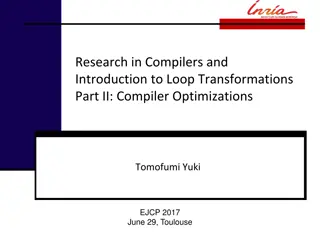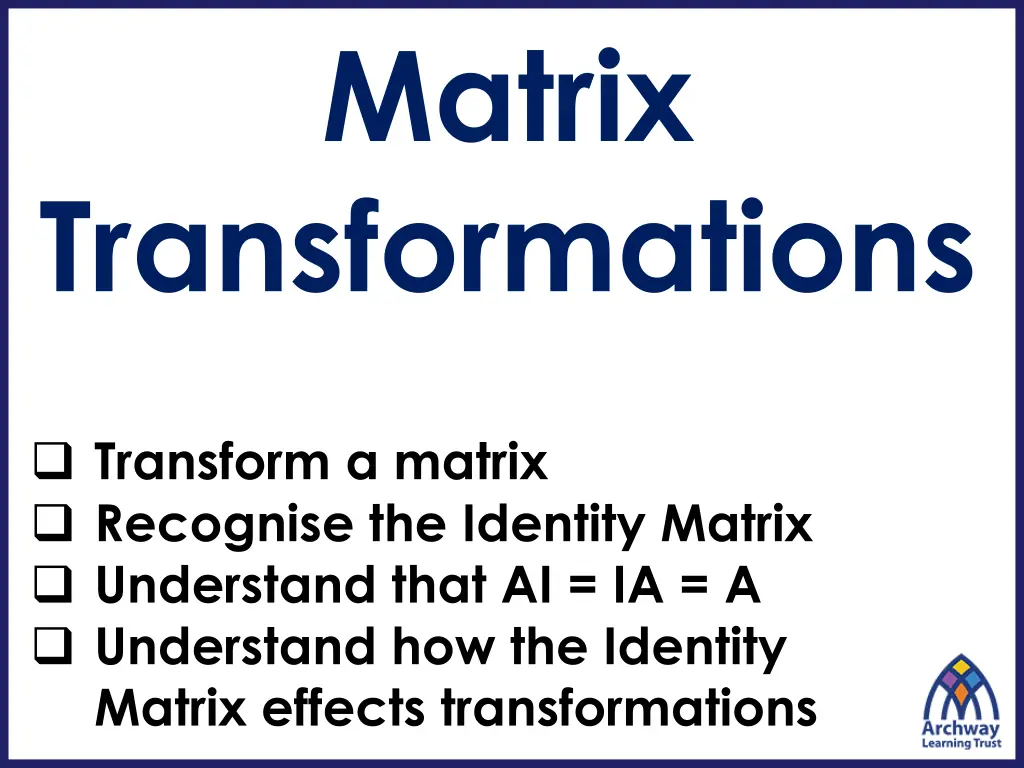
Understanding Identity Matrix in Matrix Transformations
Explore how the Identity Matrix plays a crucial role in understanding various transformations on points within matrices. Learn how the Identity Matrix affects transformations and the significance of AI = IA = A. Discover examples and matrices that illustrate these concepts clearly.
Download Presentation

Please find below an Image/Link to download the presentation.
The content on the website is provided AS IS for your information and personal use only. It may not be sold, licensed, or shared on other websites without obtaining consent from the author. If you encounter any issues during the download, it is possible that the publisher has removed the file from their server.
You are allowed to download the files provided on this website for personal or commercial use, subject to the condition that they are used lawfully. All files are the property of their respective owners.
The content on the website is provided AS IS for your information and personal use only. It may not be sold, licensed, or shared on other websites without obtaining consent from the author.
E N D
Presentation Transcript
Matrix Transformations Transform a matrix Recognise the Identity Matrix Understand that AI = IA = A Understand how the Identity Matrix effects transformations
A point P (x, y) can be transformed to an image point, P (x ,y ). We say that P is mapped to the image P .
Example 1 When the point (4,2) is transformed by a reflection in the When the point (4,2) is transformed by a reflection in the y- -axis, the image point is ( the image point is (- -4, 2 4, 2). ). (4,2) is mapped to ( (4,2) is mapped to (- -4,2) 4,2) axis, Example 2 When the point (3, When the point (3,- -1) is transformed by a rotation through 270 1) is transformed by a rotation through 270o o clockwise about the origin, the image point is (1,3 clockwise about the origin, the image point is (1,3). ). (3, (3,- -1) is mapped to (1,3) 1) is mapped to (1,3) These transformations can be defined by a matrix. For a These transformations can be defined by a matrix. For a transformation that transformation that maps (1, 0) to ( maps (1, 0) to (a, c a, c) and (0, 1) to ( ) and (0, 1) to (b, d b, d) ) the the transformation transformationmatrix matrix is is
To summarise: To summarise: Point P ( Point P (x, , y) and the image point ) and the image point P' ( P' (x', ', y') are connected by: ') are connected by:
Example: Example: To work out the image of the point ( To work out the image of the point (- -2, 5) for the transformation defined by the matrix: the transformation defined by the matrix: 2, 5) for First, write the coordinates (-2, 5) as a 2 x 1 matrix. Then multiply this vector by the transformation matrix. Write the 2 x 1 Write the 2 x 1 matrix as matrix as coordinates. coordinates. The image point is The image point is (11,9). (11,9).
4) & (x, , y) ) a) (3,2) ( a) (3,2) (- -1,5) (6,0) ( 1,5) (6,0) (- -3, 3,- -4) & ( No No transformation has occurred transformation has occurred. . b b) (3, ) (3,- -2) ( 2) (- -1, 1,- -5) (6,0) ( 5) (6,0) (- -3,4) & ( Reflection Reflection in the in the x- -axis 3,4) & (x, , - -y) ) axis. .
This matrix is called the This matrix is called the Identity Matrix, Identity Matrix, I. . When When multiplied by another multiplied by another matrix, matrix, A: : AI = = IA = = A Subsequently, when Subsequently, when I is used as a transformation matrix, no change occurs. transformation matrix, no change occurs. is used as a


